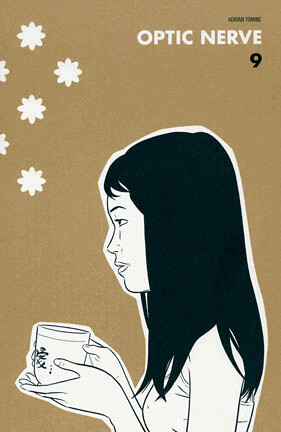
Comics: Optic Nerve, Sleepwalk and Other Stories, Summer Blonde
Website: www.drawnandquarterly.com
Making comics since year of: 1988
Art education/schools attended: University of California, Berkeley (BA in English)
TOOLS
Pencils: Sanford Turqouise 4H, Pentel 0.3 mm lead (4H), Koh-I-Noor Rapidomatic lead holders
Inks: Dr. Ph. Martin’s TECH waterproof drawing ink (black), Rapidograph Universal waterproof india Ink (black)
Brushes: Winsor & Newton Series 7, size 3 for regular inking, size 0 for white-out corrections
Pens: Hunt 102 nib, Koh-I-Noor Rapidographs (sizes 00 – 2.5)
Paper: Strathmore Bristol, 500 series, 4-ply, vellum surface
Lettering: Ames lettering guide, Rapidographs
Color: sometimes watercolors, but usually computer
Layout/composition: National Brand engineer’s computation pad
Convention sketches: various Micron pens
CRUCIAL BONUS TOOL – White-out/Corrections: regular White-Out (with brush applicator, not that weird foam tip), Pro White, and white adhesive labels, cut with an X-acto knife
Tool timeline: Too much to list here. Let’s just say my starting point was all the tools listed in the “How to Draw Comics the Marvel Way” book, and I’ve sort of been refining by trial and error ever since.
What tools you’d never use and why: I can’t foresee myself ever using one of those Wacom tablets for the computer, but what do I know?
Advice: I know a lot of artists who use tools that I can’t stand and achieve beautiful results, so I guess it’s good to just try a lot of things. I used to think that if I “solved” the mystery of what were the “correct” tools, I’d suddenly be drawing like a pro, and that obviously wasn’t the case. I also think it’s good to not be stingy when it comes to art supplies. I used to try to save money by using cheap paper, for example, and any monetary savings were far surpassed by wasted time, frustration, etc.